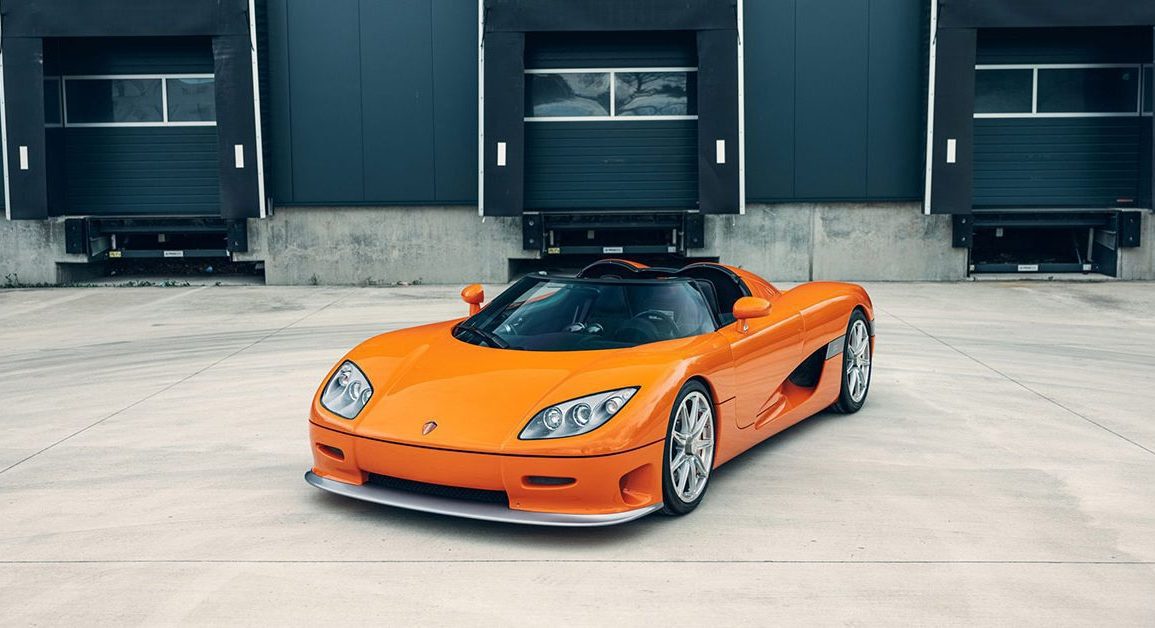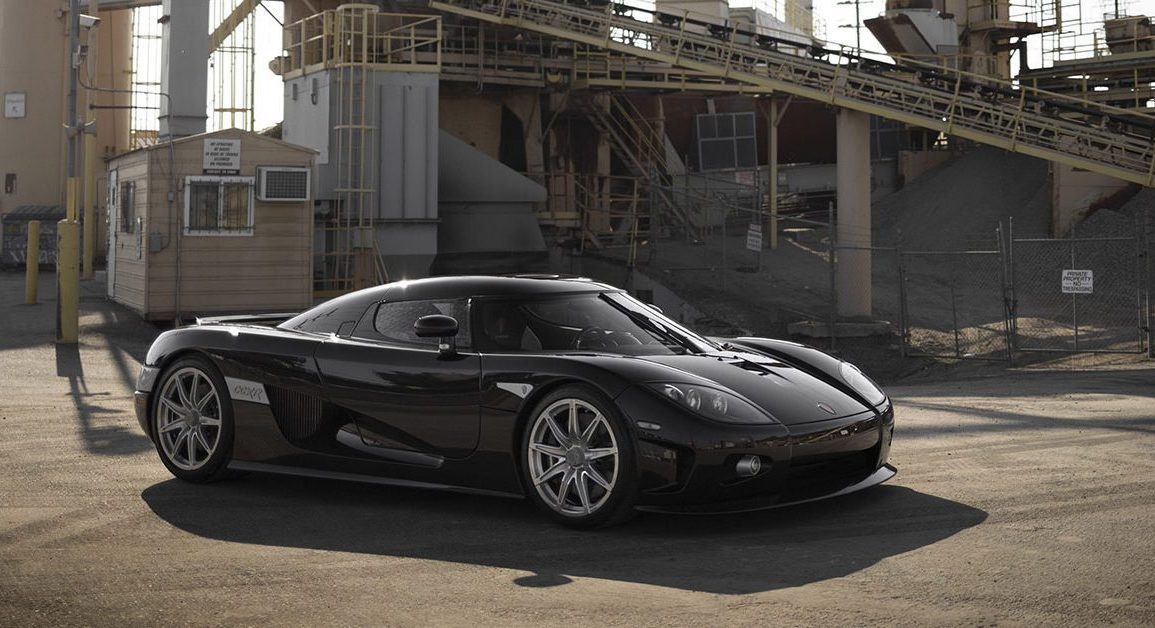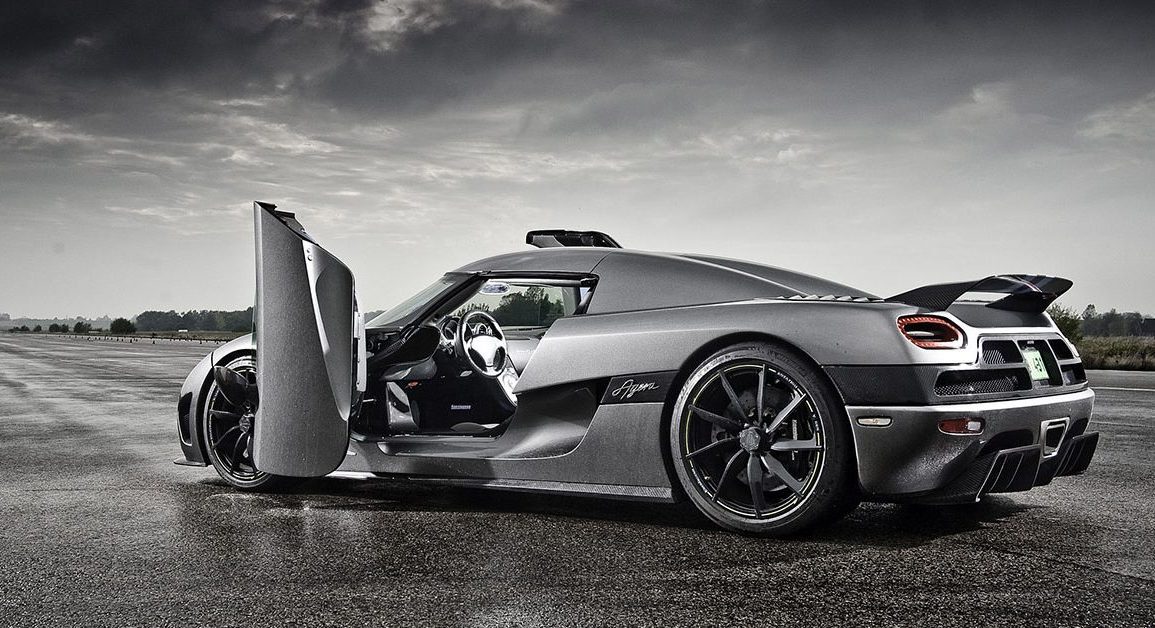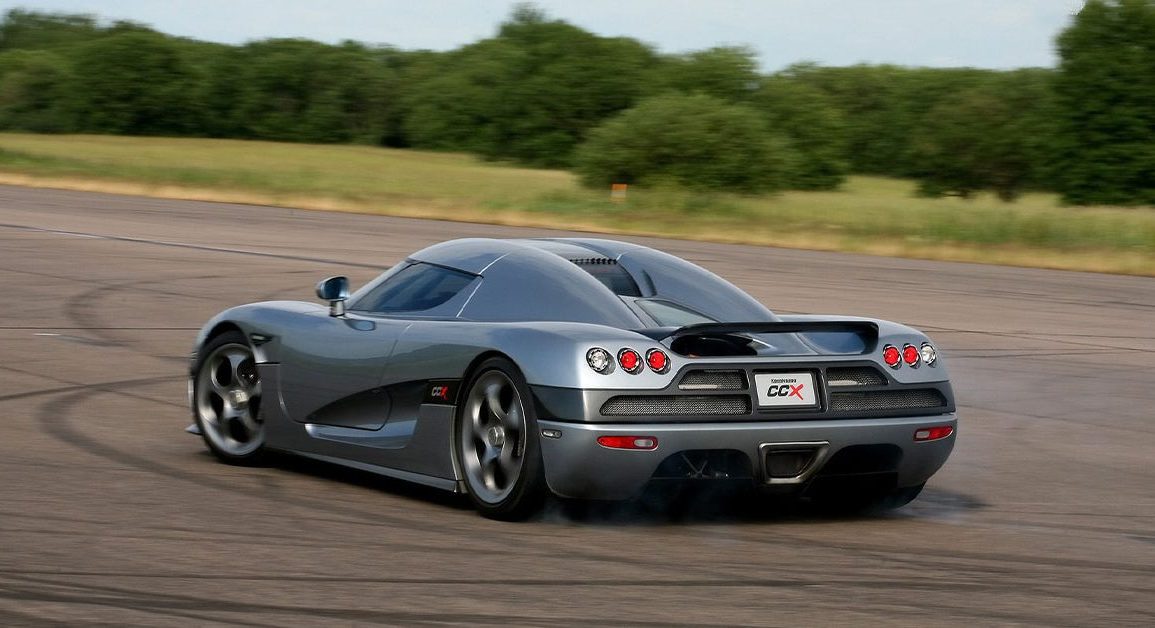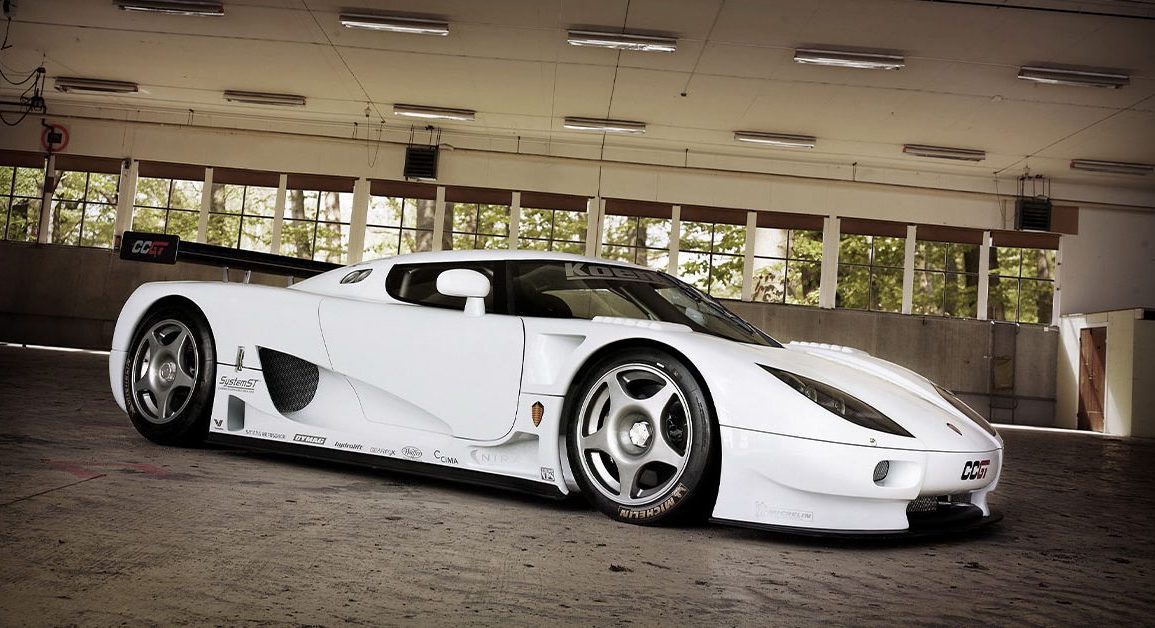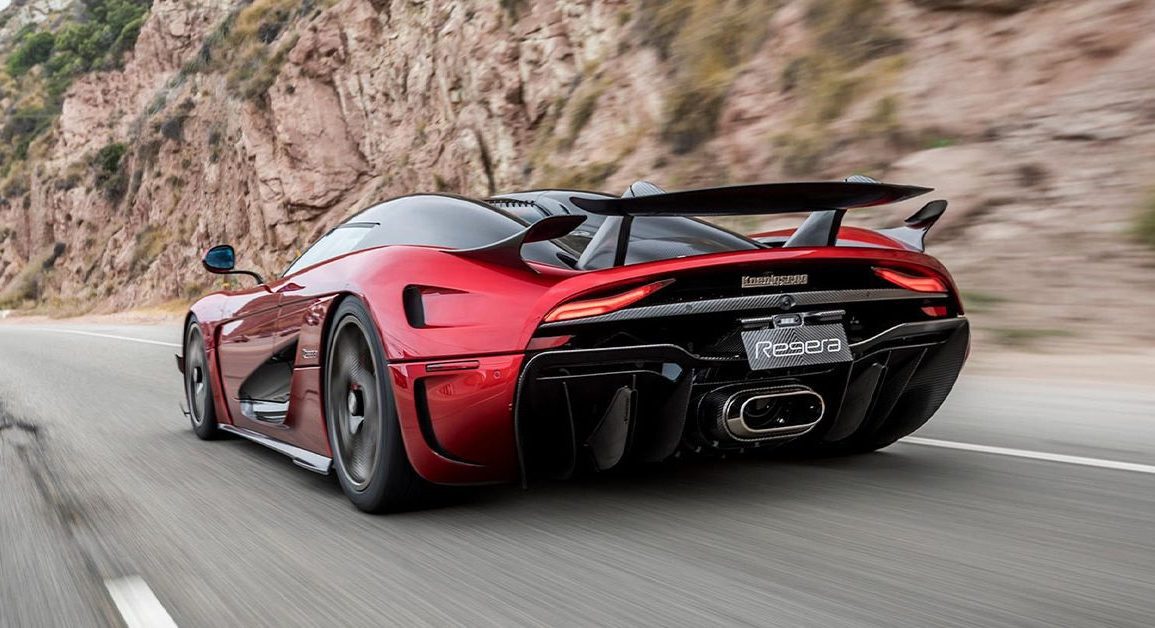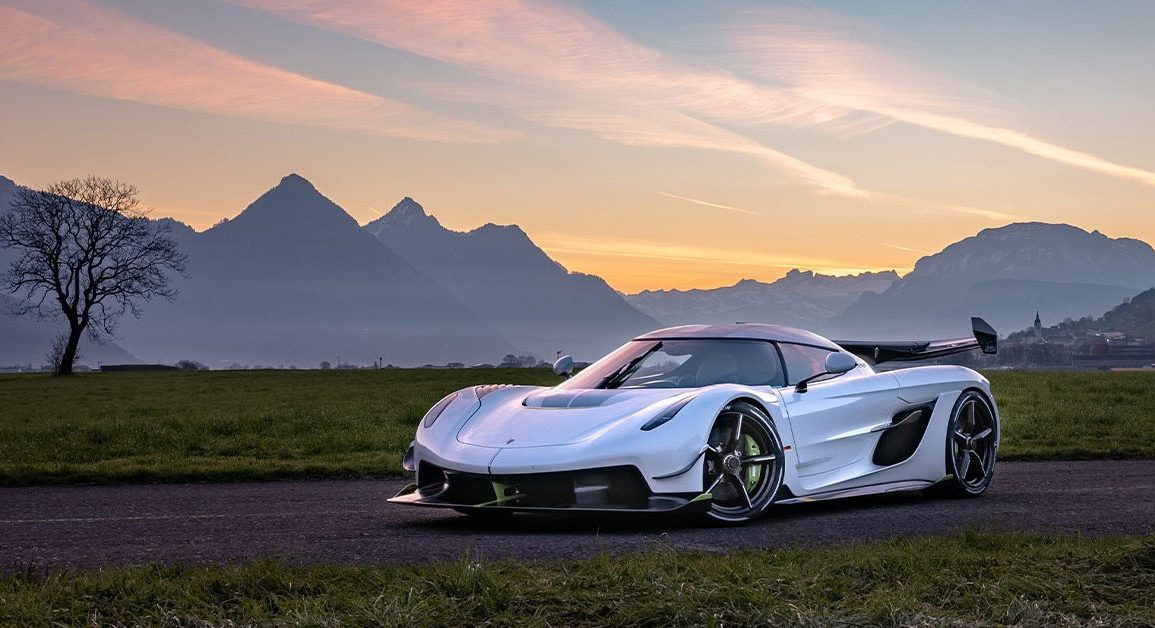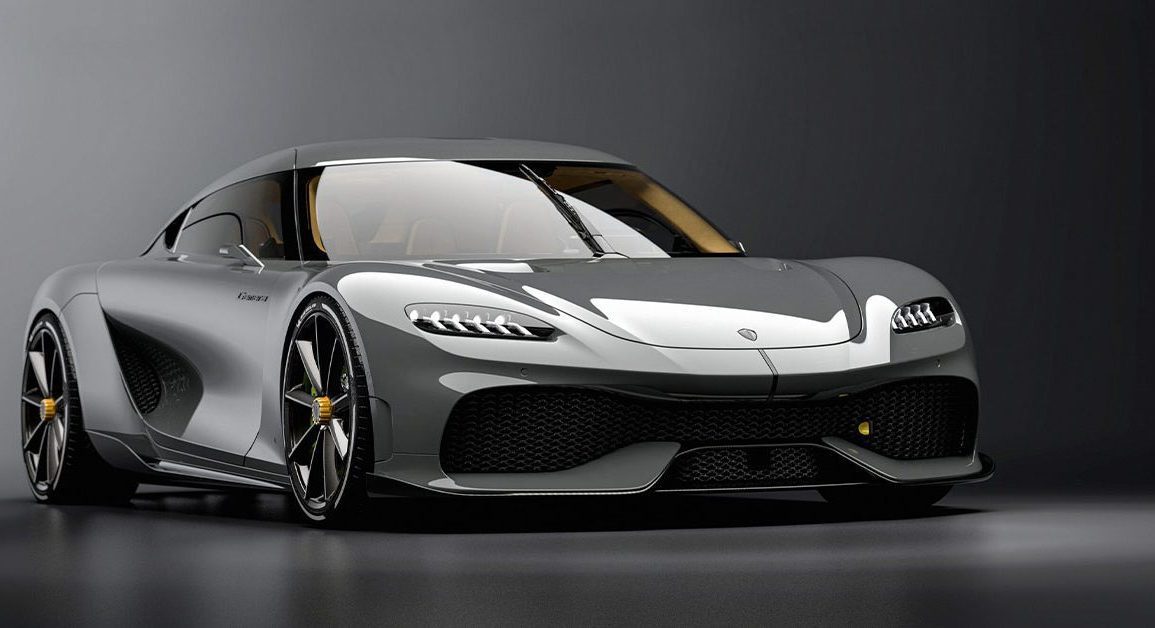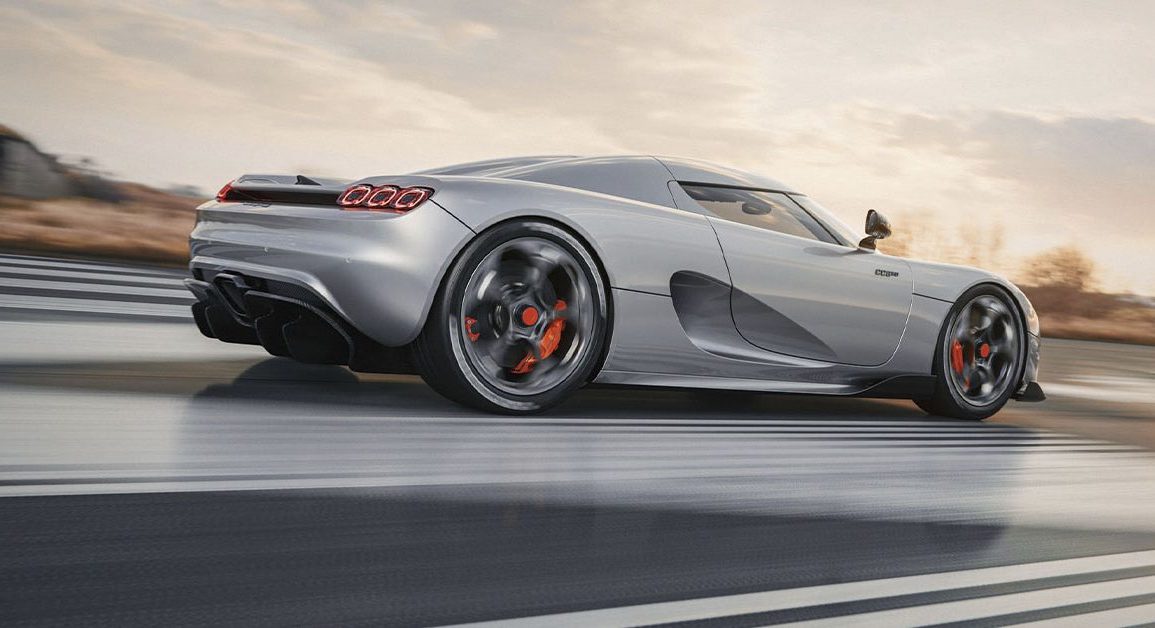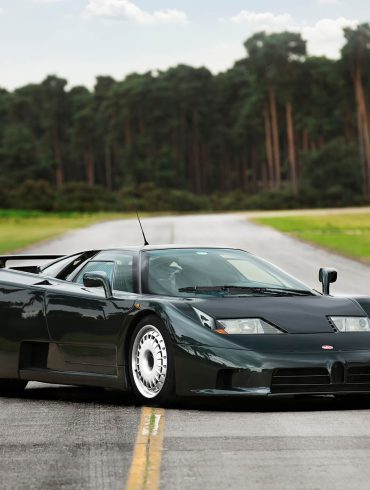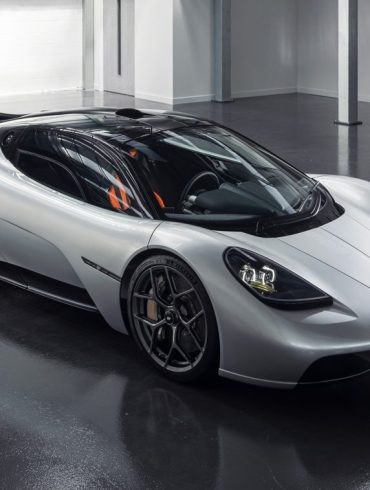The Greatest Koenigseggs Of All Time
Hypercar Heaven, Here Are The Best Koenigsegg Cars Ever Made
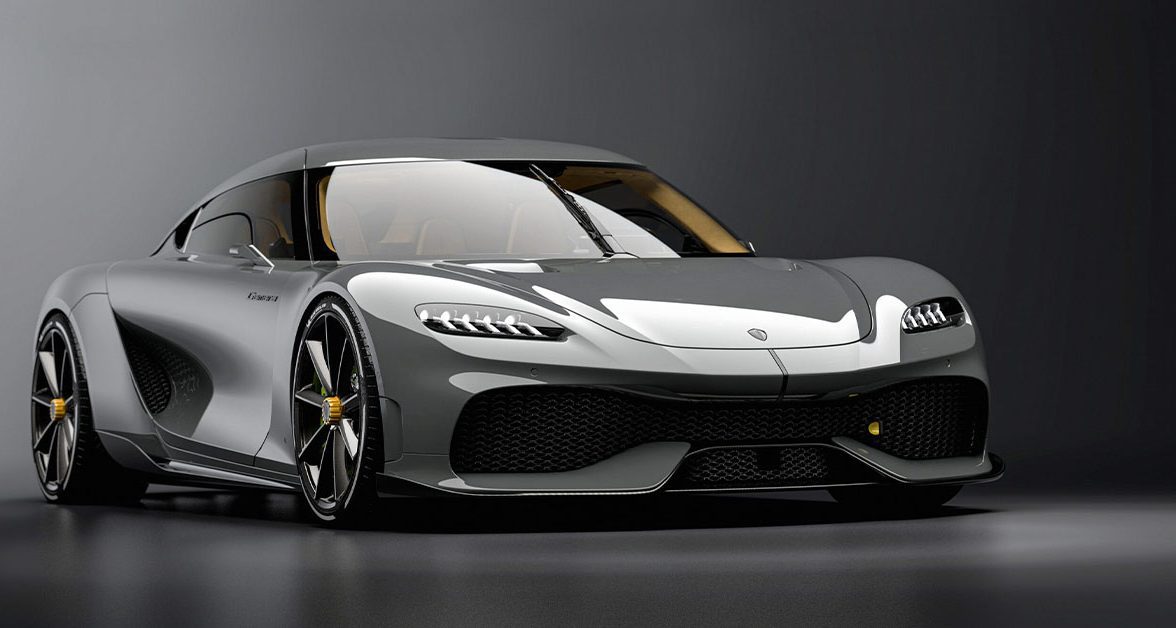
Since its inception, Koenigsegg has focused on making extraordinary automobiles
About Our Selections
Koenigsegg is a name that stands out as a beacon of innovation and speed in the exciting world of hypercars. This Swedish automaker routinely pushes the envelope of automotive technology, resulting in some of the world's most unique and desirable vehicles.
This article will take you on a whirlwind tour of the best Koenigsegg cars ever made, with models like the breathtaking Koenigsegg Jesko and the revolutionary Koenigsegg Regera. We will take a closer look at these and other Koenigsegg models and highlight what makes them so special.
Koenigsegg CC8S
The first production Koenigsegg
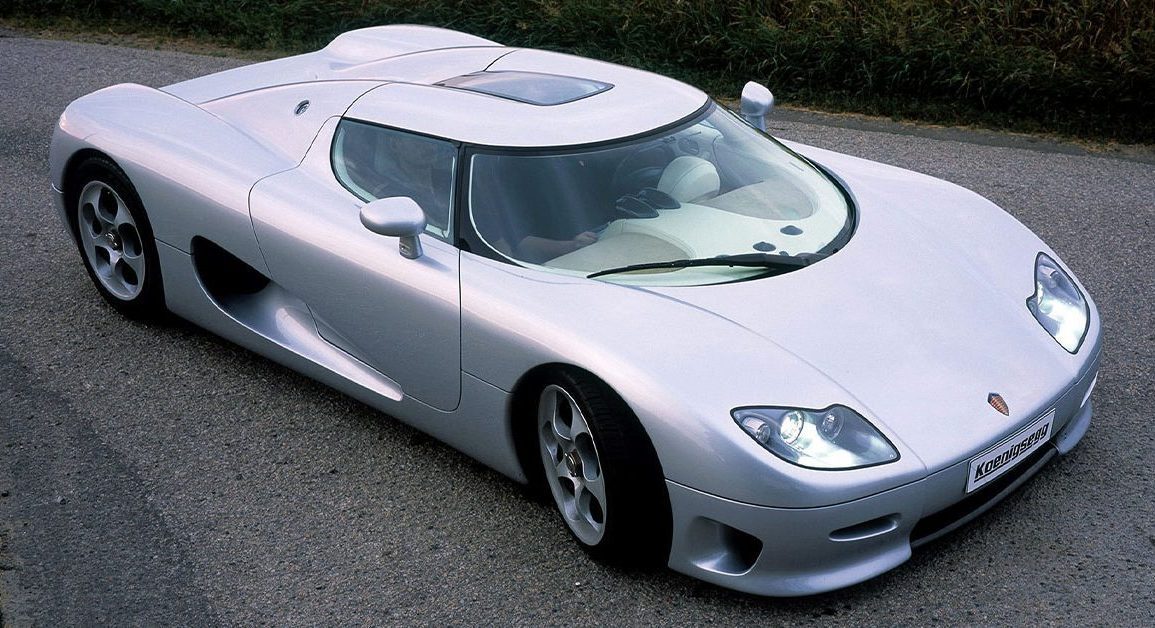
Why We Picked It:
The Koenigsegg CC8S was produced from 2002 to 2004. It was the first production car to be manufactured by Koenigsegg, and it quickly established the company as a leader in the hypercar market.
The CC8S is powered by a 4.7L supercharged Ford Modular V8 engine that produces 655 horsepower and 553 lb-ft of torque. In addition to its impressive performance, the CC8S is also known for its innovative design and construction.
The car has a carbon fiber body that is both lightweight and strong. The CC8S also has several aerodynamic features that help it generate downforce and improve stability at high speeds.
The CC8S was a groundbreaking car when it was released, and it helped to pave the way for the success of Koenigsegg today. The car is still highly sought-after by collectors and is considered one of the most iconic hypercars ever made.
Specifications:
Price: $1,500,000-$3,000,000
Engine: 4.7L Supercharged V8
Power: 655 hp
Torque: 553 lb-ft
Transmission: 6-Speed Manual
Curb Weight: 2,600 lbs
Highlights:
The CC8S was groundbreaking thanks to its carbon fiber body and aerodynamic features that made it lightweight and fast and its dihedral synchro-helix door system.
The CC8S can accelerate from 0 to 60 mph in just 3.3 seconds and reach a top speed of over 242 mph.
Learn More:
Koenigsegg CCR
The genesis of Koenigsegg
Why We Picked It:
The prototype, which at the time was known as the Koenigsegg CC (Competition Coupé), debuted at the 1997 Cannes Film Festival to widespread acclaim. The enthusiastic response fueled Christian's resolve to make his idea a reality, and he set his sights on switching to production.
In 2002, Koenigsegg released the CC8S, a more refined and sporty version of their original supercar. The CCR was already in development at the same time as the other two models; it was the most extreme form of the CC.
These upgrades were significant because the car's aluminum-block, 4.6-liter, twin-supercharged V8 engine was fine-tuned to produce an astounding 806 brake horsepower and 679 lb-ft of torque, powering the rear wheels through a six-speed manual gearbox.
A Koenigsegg CCR reached a record-breaking top speed of 387 km/h (240.7 mph) in February 2005, overtaking the McLaren F1 as the world's fastest production vehicle. Only 14 CCRs were made until they were removed from production in 2006.
Specifications:
Price: $1,000,000
Engine: Twin-Supercharged V8
Power: 806 hp
Torque: 679 lb-ft
Transmission: 6-Speed Manual
Curb Weight: 2,668 lbs
Highlights:
The CCR has a unique door system that is known as the dihedral synchro-helix system. This system allows the doors to open upwards and outwards, which makes it easier to get in and out of the car.
The Koenigsegg CCR can go from 0 to 60 mph in 3.4 seconds and a 245 mph top speed.
Learn More:
Koenigsegg CCXR
The first "green" supercar
Why We Picked It:
The Koenigsegg CCXR was produced from 2006 to 2010. It's based on the Koenigsegg CCR but features some upgrades, including a more powerful engine and improved aerodynamics. The CCXR is powered by a 4.7L twin-turbocharged Ford Modular V8 engine, producing 1018 horsepower and 750 lb-ft of torque. This allows the
In addition to its impressive performance, the CCXR is also known for its innovative design and construction. The car has a carbon fiber body that is both lightweight and strong. The CCXR also has several aerodynamic features that help it generate downforce and improve stability at high speeds.
As the first eco-friendly supercar, the CCXR was essentially a CCX with what Koenigsegg calls "Flower Power" added to run on recyclable ethanol (like E85). At the time, no other supercar maker was seriously considering environmental considerations. Since ethanol fuels have a higher octane rating than conventional pump gas, the CCXR's performance was taken to a new level.
Specifications:
Price: $2,500,000-$4,000,000
Engine: 4.7L Twin-Supercharged V8
Power: 1,018 hp
Torque: 740 lb-ft
Transmission: 6-Speed Semi Automatic
Curb Weight: 2,822 lbs
Highlights:
In true Koenigsegg fashion, the CCXR Edition was built to shatter benchmarks.
The CCXR accelerates from 0 to 60 mph in just 3.1 seconds and reach a top speed of over 250 mph.
Learn More:
Koenigsegg Agera
A special anniversary Koenigsegg
Why We Picked It:
In 2010, Koenigsegg celebrated 15 years of making dream cars by unleashing the Koenigsegg Agera. This supercar aimed to take the Koenigsegg experience to the next level on the road and track. Agera, the Swedish verb “to act,” has been chosen as the name for Koenigsegg’s latest super creation, as it symbolizes the Koenigsegg philosophy well.
When developing the Agera, the focus was to maximize driving experience, cornering speed, braking, and adaptability. The Agera still stayed true to the original philosophy, shape, and size of the original CC. At the same time, it looked, felt, and performed like something belonging to the future, with all new content.
The Agera featured the latest braking technology, incorporating an adjustable ABS system for track or road conditions. Thanks to optimized breathing and twin turbo, power is now 910 hp, running on regular petrol. Torque is a maximum of 1,100 nm. There is over 1,000 nm of torque available from 2,680 to 6,100 rpm.
Specifications:
Price: $1,000,000-$2,500,000
Engine: 4.7L Twin-Turbocharged V8
Power: 910 hp
Torque: 811 lb-ft
Transmission: 7-Speed Automatic
Curb Weight: 2,933 lbs
Highlights:
The Koenigsegg Agera new traction control was the fastest reacting in the industry, with auto-adapt functionality for different road conditions, driving styles, and several manual settings.
The Agera can hit 60 mph in 3.1 and achieve a top speed of 245 mph.
Learn More:
Koenigsegg CCX
Tapping into the American market
Why We Picked It:
Koenigsegg redesigned their CCR supercar into the CCX to conform to international standards and tap into the lucrative American market. Called the CCX to celebrate a decade since the initial prototype was unveiled; it complied with stringent pollution limitations in the US.
For certification, the company developed a new set of body panels that extended the CC and allowed numerous performance upgrades. Also, a redesigned front fascia with a scoop for cockpit cooling, wheel extractors beneath the front arches, and new side rocker panels to improve undertray aerodynamics.
Better ducting helped keep the engine bay cooler, producing more space for the exhaust at the rear. Koenigsegg also invested heavily in R&D to sand-cast their own V8, compatible with 91 octane fuel and designed for high compression. A total of 806 hp and 678 lb-ft of torque are produced. The power is sent to the rear wheels via a six-speed manual transmission.
Specifications:
Price: $1,200,000
Engine: 4.7L Twin-Supercharged V8
Power: 806 hp
Torque: 678 lb-ft
Transmission: 6-Speed Sequential
Curb Weight: 2,933 lbs
Highlights:
On previous models Koenigsegg used a Ford Racing block with Koenigsegg-manufactured components but for the CCX they made their own block casting, leaving no connections to Ford or the Mustang.
The Koenigsegg CCX had a 0 to 60 mph time of 3.4 seconds and a top speed of 245 mph.
Learn More:
Koenigsegg CCGT
Koenigsegg's ultralight race car
Why We Picked It:
The CCGT, a race vehicle developed by Koenigsegg in 2007, was derived from the production CC model. The CCGT adhered to the FIA GT1 and ACO rules. The 5.0-liter CCGT engine is derived from the production-spec Koenigsegg CCX engine without superchargers. The much more robust and dependable road car engine proved to be a reliable partner for the more dependable race engine.
The GTI race car's minimum weight requirement is 1,100 kg, and most manufacturers find it challenging to reach this limit and need extensive weight-loss initiatives. However, the racing CCGT weighs slightly less than 1,000 kg because of the Koenigsegg CC vehicles' extremely lightweight and stiff road construction. This permits the free placement of 100 kg of ballast inside the vehicle structure while adhering to the regulations.
Short overhangs on the CCGT are a problem when producing adequate downforce. However, Koenigsegg achieved a surprising amount of down-force paired with very compact packaging and perfect weight distribution by extending the ingenious and "slippery" design concept of the CC family.
Specifications:
Price: $3,300,000
Engine: 5.0L V8
Battery: 48V
Power: 960 hp
Torque: 737 lb-ft
Transmission: 7-Speed Automatic
Curb Weight: 2,190 lbs
Highlights:
The CCGT engine is based on the Koenigsegg CCX production 4.7-liter engine with the superchargers removed but enlarged to 5.0-liter.
The CCGT can go from 0 to 60 mph in 3.0 seconds and reach 245 mph.
Learn More:
Koenigsegg Regera
The limited-edition hybrid hypercar
Why We Picked It:
Koenigsegg Regera was a limited-edition hybrid sports automobile. Regera is Swedish for "to Reign" – a suitable name for a machine that offered a never-seen-before combination of power, responsiveness, and luxury – creating a true Dr. Jekyll & Mr. Hyde persona.
It debuted at the Geneva Motor Show in 2015 boasting a twin-turbocharged 5.0-liter V8 engine with three electric motors generating a total output of1,489 horsepower and 1,475 lb-ft of torque.
The Regera was developed as a high-end mega car substitute for the customarily light, race-inspired road cars produced by Koenigsegg. Although the One:1 and Agera are surprisingly useful and comfortable, their major focus had always been to be the fastest cars in the world.
The Regera is renowned for its cutting-edge hybrid drivetrain and avant-garde design elements, such as a unique direct drive system that does away with the requirement for a conventional gearbox. Only 80 Regeras were made.
Specifications:
Price: $3,500,000
Engine: 5.0L Twin-Turbocharged V8 + 3 Electric Motors
Power: 1,489 hp
Torque: 1,475 lb-ft
Transmission: Direct Drive
Curb Weight: 4,439 lbs
Highlights:
Koenigsegg Direct Drive (KDD) is a novel powertrain technology that helps explain the Regera's impressive capabilities by replacing the traditional gearbox.
The Regera was designed for high performance, with a top speed of over 250 mph and can accelerate from 0-62 mph in just 2.8 seconds.
Learn More:
Koenigsegg Jesko
Koenigsegg madness
Why We Picked It:
The Jesko hypercar, which succeeded the Agera, was named for CEO Christian Von Koenigsegg's father, who provided early financial support for the startup. The automobile comes in two distinct models. Koenigsegg made two versions, one optimized for speed (reaching 300 mph) and the other for downforce (racing). A new carbon fiber and aluminum chassis, suspension system, engine, and gearbox are standard across the board.
A 5.0-liter twin-turbo V8 is included in the vehicle. The engine was developed to be more potent and lighter than the company's previous V8 offerings. The Jesko has a custom 9-speed multi-clutch transmission developed in-house.
At 170 mph, the car generates an incredible 2,200 pounds of downforce from the combination of the massive front splitter, the massive wing at the back, and the body's aerodynamic design. At top speed, the vehicle generates more than 3,000 pounds of downforce. The G-force gauge is an aesthetic tribute to pilots and techies everywhere.
Specifications:
Price: $3,000,000
Engine: 5.0L V8 Twin-Turbocharged
Power: 1,280 hp
Torque: 1,106 lb-ft
Transmission: 9-Speed Automatic
Curb Weight: 3,131 lbs
Highlights:
When compared to the development of modern dual-clutch technology the Koenigsegg Light Speed Transmission (LST) exhibits a level of progress not seen before.
The Koenigsegg Jesko hits 60 mph in 2.6 seconds and reach an astonishing 310 mph.
Learn More:
Koenigsegg Gemera
The family hypercar
Why We Picked It:
Koenigsegg made the best family automobile ever with the Gemera. This isn't your typical four-door car; it's a plug-in hybrid grand tourer. Instead, this is a significant step forward in automotive design that has the potential to pave the way for an entirely new class of automobiles. Without a shadow of a doubt, the Gemera has what is one of the most innovative automobiles of recent years.
The Koenigsegg Gemera is the company's first four-seater. The layout has four seats and an odd number of cup holders (eight in all). While we can't say we understand why Koenigsegg included so many drink holders, we can say that multi-drinker types will be grateful for them.
The Gemera is driven by a 2.0-liter twin-turbocharged inline-three engine and four electric motors: two at the back wheels and one at the crankshaft. The combined output is a staggering 1,677 horsepower and 2,581 pound-feet of torque.
Specifications:
Price: $1,700,000
Engine: 2.2L Twin-Turbocharged Inline-Three + 4 Electric Motors
Battery: 850V 14 kWh HV
Power: 1,677 hp
Torque: 2,581 lb-ft
Transmission: 9-Speed Automatic
Curb Weight: 4,383 lbs
Highlights:
Running on methanol or ethanol, the Gemera is cleaner than a pure EV. With E85, it's as close to carbon neutral to make no difference. It can also use regular 91 or higher octane pump gas.
The Koenigsegg Gemera has an face-melting 0 to 60 mph time of 1.9 seconds and impressive 250 mph top speed.
Learn More:
Koenigsegg CC850
A special anniversary Koenigsegg
Why We Picked It:
2022 marked Christian von Koenigsegg's 50th birthday, and the Swedish automaker released a cutting-edge hypercar that same year with a nostalgic aesthetic. This idea, inspired by the Koenigsegg CC8S, was limited to 50 production runs. The 5.0-liter V8 engine in the CC850 with two turbochargers can generate up to 1,385 horsepower. The CC850 pays tribute to the CC8S, Koenigsegg's debut vehicle introduced over two decades ago.
The innovative ESS gearbox in the CC850 allows the driver to choose between a gated six-speed manual with a clutch pedal and a nine-speed automatic.
Similar to the engine in the Jesko, the 5.0-liter twin-turbo V8 engine in the CC850 is flywheel-free. The numbers clearly show the outcomes: Its 1,185 horsepower on conventional fuel, 1,385 horsepower on E85 gasoline, and astounding 1,020 lb-ft of torque, all combined with a 1,385 kg total weight, is the same as the 1:1 power-to-weight ratio displayed by the ONE:1 in 2014.
Specifications:
Price: $3,650,000
Engine: 5.0L Twin-Turbocharged V8
Power: 1,185 hp
Torque: 1,385 lb-ft
Transmission: 9-Speed Automatic + 6-Speed Manual
Curb Weight: 3,053 lbs
Highlights:
Combined with a clutch pedal, the CC850 unique transmission allows the ESS to function as a multi-ratio, flexible 6-speed manual or a lightning-fast, seamless 9-speed automatic.
The Koenigsegg CC850 can reach a top speed of 280 mph and accelerate from 0 to 60 mph in 2.7 seconds.


